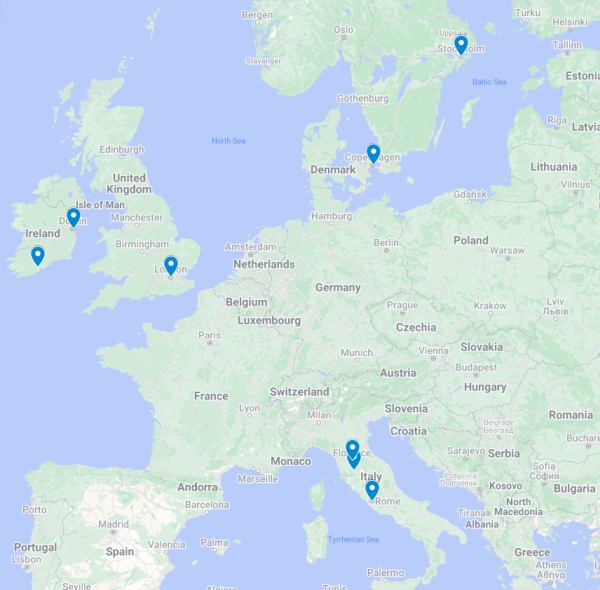Campus clubs strive to create inclusive spaces
Chinese American Friendship Society, Association for Asian and Asian American Awareness work to celebrate diversity
The Association for Asian and Asian American Awareness, A5, and the Chinese American Friendship Society provide different avenues for cultural representation and understanding among American, Asian and Asian American students on campus.
A5, which is the older of the two groups, strives to appreciate “the tradition, honor, beauty and wisdom of all Asian cultures, for the benefit of Asian descent and non-Asian descent students alike in an effort to educate and dispel stereotypes,” according to part of its purpose description on the Allegheny College Student Leadership and Involvement website.
“The current purpose of A5 is just to expose people and have fun with Asian culture and the food and any questions that we have,” said A5 Treasurer Tiffany Choi, ’19.
Snacks and other food items are a primary focus among campus-wide A5 events. The majority of events the club hosts are annual and include making Korean mixed rice, a fruit spring roll night and a bubble tea event for which club members prepare all the ingredients themselves. The club also participates in game nights, bowling and other small-group activities.
“‘We eat a lot’ is definitely the take-home message,” said A5 President Kathleen Reed, ’19.
Food events and activities are meant to create a home for students who may not immediately have one at Allegheny, according to Choi.
“[A5 has] a lot of international students, especially Chinese, because they need a place, like a sense of belonging, that’s what A5 tries to give,” Choi said.
Reed and Choi said many A5 members are Chinese or Chinese American and A5 food and events have tended to reflect that membership. Reed expressed concern about other Asian cultures, including Japanese and Korean cultures, becoming overshadowed as A5 has become more focused on Chinese representation.
“I think us in general just being an all-around Asian club was something that Chinese people thought, ‘I need to have my own Chinese club,’ which makes sense,” Reed said.

Xingbang Liu, ’20, and Chih-Jung Chen, Chinese language teaching assistant, set up mahjong and teach Alec Tolmachoff, ’20, Thomas Cassidy, ’21, and Malcolm Willig, ’21, how to play at the Chinese American Friendship Society’s Chinese New Year Celebration on Friday, February 16, 2018.
The Allegheny College Chinese American Friendship Society was established nearly two years ago with the help of Xiaoling Shi, associate professor of Chinese.
Shi said the friendship component of the CAFS is the central purpose of the club’s existence.
“I just think there was a need to create a platform so that American students and Chinese students could interact on a daily basis, so they can enhance their mutual understanding,” Shi said.
The CAFS currently involves a majority American board and membership, but eventually, would ideally come from a more even mix of Chinese and American students, according to Shi.
“Our goal is to make it some kind of half-half, half Chinese international students, half American students,” Shi said.
The students of the CAFS have organized two primary events this year — a welcoming winter festival in December, and a Chinese New Year celebration in February.
Xingbang Liu, ’20, cultural consultant for the CAFS, said becoming involved with the society is an opportunity for Chinese and American students to communicate with one another and share cultural perspectives.
CAFS President Christopher Miller, ’19, said Asian students have historically been underrepresented among faculty and students and he believes the CAFS provides a more individualized sense of belonging for Chinese students specifically.
Miller referred to the spring 2017 campus visit of Tibetan monks from the Drepung Loseling Monastery in India as an example of Chinese voices being quieted at Allegheny.
The “Free Tibet” flag on display in the Bowman~Penelec~Megahan Art Gallery during the monks’ five-day creation of a traditional sand mandala generated the most concern among Chinese students, according to Miller and a March 2017 Campus article about the visit.
“Many Chinese students felt offended by this, but there was no medium in which they could convey their concerns,” Miller said. “So having an organization like the Chinese American Friendship Society, which is a bridge between American and Chinese cultures, and a bridge between students and administration in that regard, is most beneficial for any school — not just Allegheny.”
Prior to the monks’ 2017 visit, the college lacked a distinct space for Chinese students to express themselves and their opinions, according to Shi.
Shi said the need for a new, separate club arose because many A5 members are from the U.S. and are not able to relate to most international and Chinese students.
“They actually grew up in America, they went through the K-12 school system in America,” Shi said. “So they actually do not feel that same alienation as Chinese students feel.”
Liu said A5 and the International Club have served as useful partners for hosting events, though, and the three organizations have similar goals.
A5 and the CAFS have both evolved since their inceptions, but transcending cultural and language barriers to gain understanding of and appreciation for campus peers remains an important ideal.
CAFS Vice President Markeyda Jones, ’21, said one of the biggest challenges the society currently faces is balancing American and Chinese membership and finding ways to increase membership among Chinese students.
“I think that’s the struggle, we’re trying to find other students to attend, but we’re still working on it and hoping that it will come together,” Jones said.







